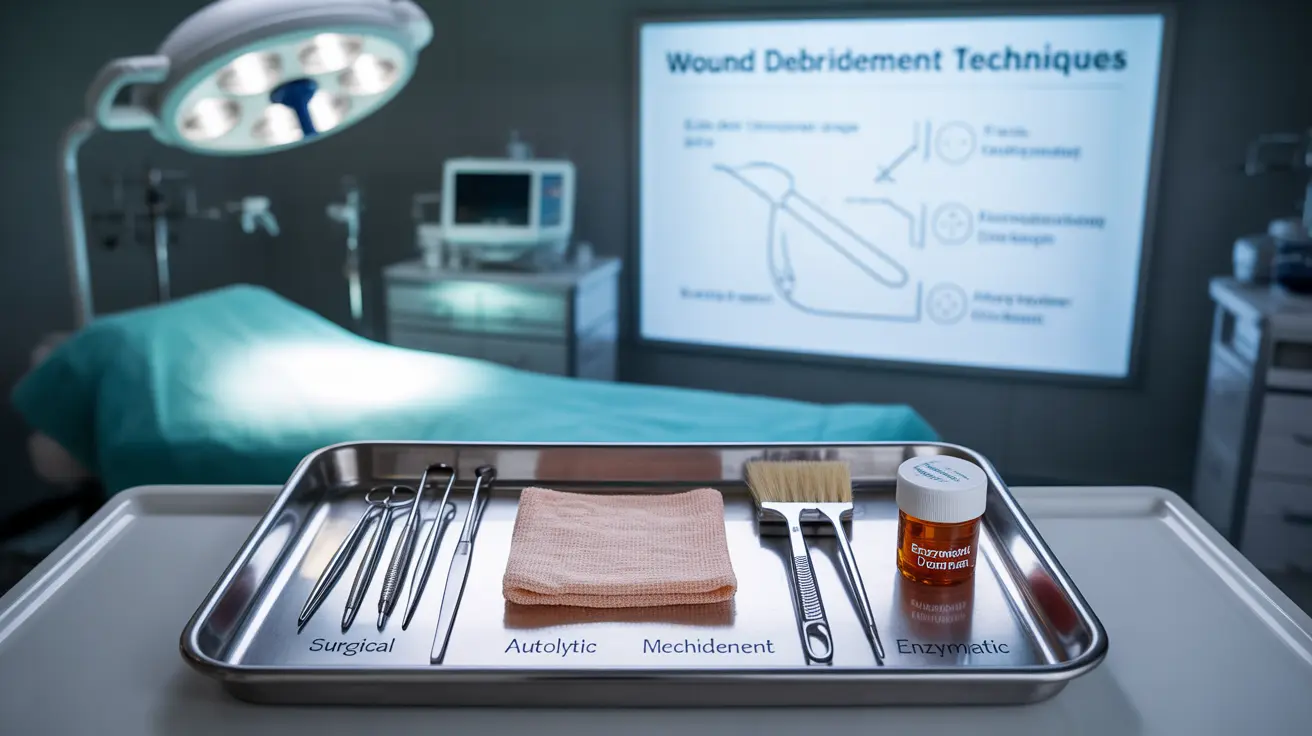Wound debridement is a crucial medical procedure that involves removing dead, damaged, or infected tissue to promote proper healing. This essential treatment helps prevent complications and supports the body's natural healing process by creating an optimal environment for new, healthy tissue growth.
Whether performed in a clinical setting or as part of ongoing wound care, understanding debridement methods and their applications can help patients better prepare for and participate in their treatment journey. Let's explore the various aspects of debridement and what you can expect from this important medical procedure.
Types of Wound Debridement
Healthcare providers can choose from several debridement methods, each suited to different wound types and patient conditions:
Surgical (Sharp) Debridement
This method involves using sterile surgical instruments to physically remove dead or infected tissue. It's typically performed by trained healthcare professionals and is often considered the fastest and most effective approach for extensive or severely infected wounds.
Mechanical Debridement
This technique uses physical force to remove dead tissue, often through wet-to-dry dressings or specialized wound cleansing. While less precise than surgical methods, it can be effective for certain wound types.
Autolytic Debridement
This natural process uses the body's own enzymes and moisture to break down dead tissue. Special dressings help create the ideal environment for this process, making it gentle but slower than other methods.
Enzymatic Debridement
This approach uses prescribed topical enzymes to selectively break down and remove dead tissue while preserving healthy tissue. It's particularly useful when surgical debridement isn't appropriate.
The Debridement Process
The debridement process typically begins with a thorough wound assessment by a healthcare provider. They'll evaluate factors such as:
- Wound size and depth
- Amount of dead tissue
- Presence of infection
- Patient's overall health status
- Pain management needs
Based on this assessment, they'll recommend the most appropriate debridement method or combination of methods to achieve optimal healing outcomes.
Pain Management and Recovery
Pain management during debridement varies depending on the method used and the extent of the procedure. Healthcare providers may use:
- Local anesthetics
- Topical pain medications
- Oral pain relief medications
- Conscious sedation (for extensive procedures)
Recovery time varies based on the wound type and debridement method, but patients can generally expect some discomfort during the healing process.
Managing Chronic Wounds
Debridement plays a vital role in treating chronic wounds, particularly in conditions like:
- Diabetic foot ulcers
- Pressure ulcers
- Venous leg ulcers
- Non-healing surgical wounds
Regular debridement may be necessary to maintain proper healing progression and prevent complications in these cases.
Frequently Asked Questions
What are the different types of debridement and how do they work to promote wound healing? Debridement types include surgical, mechanical, autolytic, and enzymatic methods. Each works differently to remove dead tissue and promote healing by creating a clean wound bed that allows new tissue to form.
When is surgical or sharp debridement necessary compared to other debridement methods? Surgical debridement is typically necessary for extensive wounds, severe infections, or when rapid removal of dead tissue is crucial. It's often chosen when other methods would be too slow or ineffective.
What should I expect during and after a debridement procedure in terms of pain and recovery? During the procedure, pain management methods will be used appropriate to the debridement type. After treatment, some discomfort is normal, and recovery time varies based on wound severity and the chosen method.
How does debridement help in managing chronic wounds like diabetic foot ulcers? Debridement helps chronic wounds by removing barriers to healing, reducing bacterial burden, and stimulating new tissue growth. For diabetic foot ulcers, it's often crucial for preventing complications and promoting healing.
Are there any risks or complications associated with debridement and how can they be minimized? Potential risks include bleeding, pain, infection, and damage to healthy tissue. These can be minimized through proper technique, appropriate method selection, and careful monitoring during and after the procedure.




